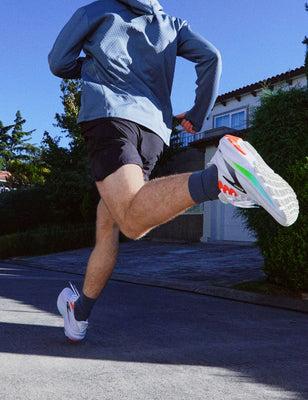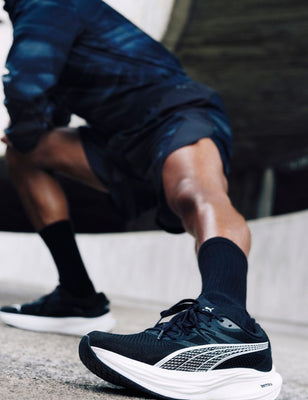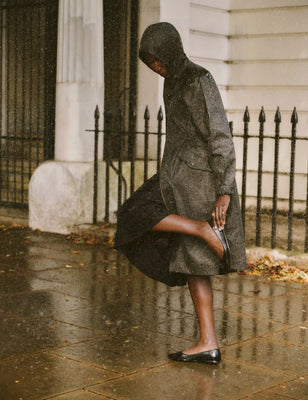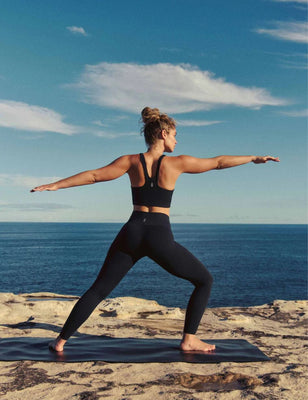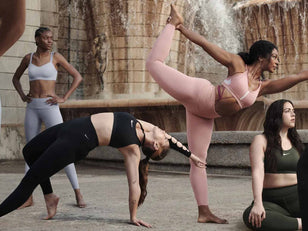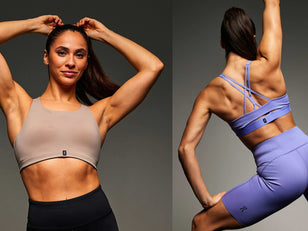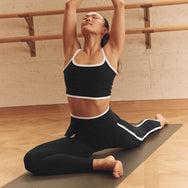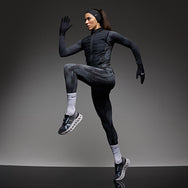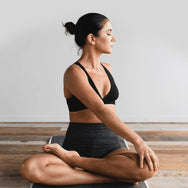Fitness fads come and go but some are worth sticking out. You might have heard of mindful movement in recent months but do you know what it is?
While there’s a whole load of hype surrounding mindful meditation and activities, giving this practice a go could be well worth your time. It’s remarkably simple and the benefits are immense.
Within this guide, we will take a look at what it is, the many benefits of mindful movement and, of course, how you can get started and try it for yourself.

WHAT IS MINDFUL MOVEMENT?
While it may sound complicated, mindful movement is anything but hard to understand. Put simply, it refers to engaging in different exercises while placing all of your attention (or as much as you can) on the movements of your body as well as your breathing.
For example, you could take a moment to notice the weight of your body on your feet or the position of your back when you’re sitting down.
The chances are that you usually overlook these aspects of your physical well-being. By drawing your attention to them, you can gain a moment of stillness and relaxation.
“Being mindful in your moments allows you to participate in the full benefits of the experience,” explains Michael James Wong, global yogi and author of Sit Down, Be Quiet.
“Movement routines and activities are more than just physical when done mindfully, they allow the mind to focus, engage and be present. The breath supports the movements, your attention helps you feel and appreciate the subtitles of actions.
Moving mindfully is easily the best and most effective way to get the most out of your physical activity.”
 Michael James Wong / Photo by Jake Paul White
Michael James Wong / Photo by Jake Paul White
WHAT IS MINDFUL MOVEMENT MEDITATION?
Mindful movement meditation takes this practice one step further. During a mindful movement activity, the aim is to stay present in the moment and notice the world around you.
When you enter mindful movement meditation, on the other hand, you completely absorb yourself in a meditative state. While you may find it hard to meditate when you first get started, the key to this mental wellness activity is practice.
One of the simplest ways to try mindful movement meditation is to listen to an audio track while walking. You can find a variety of free audio resources on Mindful.org or simply choose a podcast meditation tutorial.
As you walk, listen deeply to the track and pay attention to various things, such as your breathing or the things you can see around you.
WHAT ARE THE BENEFITS OF MINDFUL MOVEMENT?
So, why do people both with mindful movement? More than just the latest wellness trend, this practice can unlock some serious benefits.
Whether you’re looking to boost your sleep or lower those stress levels, there are plenty of reasons to give it a go. Interested in finding out more? Here are some of the top benefits of mindful movement.
Lower Stress and Anxiety
Stress and anxiety are deadly. These mental health issues can often have a physical impact on us from increasing the risk of cardiovascular problems to weight gain. Tackling the source of the problem is a smart move for your health and wellness.
According to a recent study from Penn State, practising trying mindful movement for anxiety could be the answer. The researchers looked at the activity and stress levels of 158 students as part of the study.
When the students were more mindful and active at the same time, their stress and anxiety levels fell dramatically.
“Most studies in this area have focused on the differences between people who are more versus people who are less mindful, but we saw that college students often slipped in and out of mindful states during the day,” explained David Conroy, professor of kinesiology at Penn State.
“Developing the ability to shift into these states of mindfulness as needed may be valuable for improving self-regulation and well-being.”
Ease Low Moods
Feeling a little blue? Research published in Frontiers in Psychiatry suggests that engaging in meditative movement could lower feelings of depression and anxiety.
The study authors stated that this type of movement was ‘at least as effective’ as other forms of exercise. You may find that you can use mindful movement for energy or to lift your spirits each day.
Setting aside some time to engage in mindful movement ensures that you have a chance to relax. You may decide to add this to your existing self-care routine.
Additionally, you can keep a mood diary at the same time to track your emotional wellness. Doing so will help you see whether engaging in mindful movement has impacted how you feel.
Improved Level of Focus
Modern life is busy. When was the last time you stopped and appreciated the present moment? Truth be told, it’s easy to get caught up in what’s going on in our minds and not focus on what’s happening around us. That’s where mindful movement is different.
Taking the time to really notice how you’re feeling and your physical state is a skill that you can develop over a period of time. At first, you might find that your mind naturally wanders while you’re trying to practice this activity.
That’s not as big a problem as you might imagine. Ease into mindful movement exercises so you can start to hone this skill.
Enhanced Relaxation and Sleep
Are you getting enough rest each night? Adults need an average of seven to eight hours of sleep each night. However, for many of us, ensuring that happens can be difficult. Whether you’re stressed, busy, or overstimulated, finding it hard to drop off is a common problem.
Fortunately enough, there’s some evidence to suggest that mindful movement can help. Taking a few minutes to settle your mind and body before bed could help you both fall asleep faster and get a more restful night’s sleep, according to a recent scientific review.
If you want to use mindful movement for sleep, try engaging in right before you hit the hay.

THE DIFFERENCE BETWEEN MINDFUL MOVEMENT AND YOGA
Before we delve into the different types of mindful movement, let’s tackle the elephant in the room. On paper, mindful movement sounds an awful lot like yoga. There’s a good reason for that. Yoga is one form of mindful movement. Or, at least, it can be.
Not all yoga is mindful movement… and not all mindful movement is yoga. If you engage in a meditative form of yoga, mindfulness will be at the centre of your practice. However, there are plenty of types of mindful movement that have nothing to do with yoga.
USING MINDFUL MOVEMENT FOR PHYSICAL THERAPY
Whether you’re recovering from an injury or illness, your doctor may prescribe you a course of physical therapy. You may work with a physiotherapist or be given a set of movements to do at home on a regular basis.
Since mindful movement involves focussing on each motion and your breathing pattern, there’s a lot of overlap here. Often enough, there’s an element of mindful movement in physical therapy courses.
GET STARTED: HOW TO DO MINDFUL MOVEMENT
If you’re ready to start something new and feel like giving mindful movement a whirl, there’s no time like the present. Luckily, there are plenty of ways you can get started with this practice. Let’s take a look at four options that you may wish to try for yourself.
Mindful Yoga
As we’ve covered, one of the most common ways to practice mindful movement is through meditative yoga. Some forms of this activity type lend themselves perfectly to mindful meditation.
For instance, hatha yoga often encompasses an element of mindful meditation. When searching for a class that’s right for you, be sure to research well.
Walking Outdoors
An easy way to incorporate some mindful movement into your life is to simply head out for a walk. While you’re trekking outside, try to focus on how you’re physically feeling as well as your surroundings.
Avoid thinking about things like what you’re going to have for dinner and just put all your energy into noticing what’s happening.
Tai Chi
Combining deep breathing with flowing movements, Tai Chi is an effective form of mindful movement. There are different styles of this Chinese martial art, and some are faster than others.
However, they all focus on the same ethos, of concentrating on your breathing as you move from position to position. Why not look for starter sessions online?
Qigong
Often called a mind, body and spirit practice, Qigong is another movement and breathing technique. Based on martial arts training and meditation practices, this activity encompasses a wide variety of techniques.
The result is a form of mindful movement that is suitable for people of all ages and skill sets.
CONCLUSION
So, what are you waiting for? Trying mindful movement could help you strengthen your focus, relieve your stress levels, and curb anxiety. There’s no downside to giving it a try and seeing how it benefits you.
What’s more, you don’t need any special gear or classes to get started. Go ahead and give it a go.



